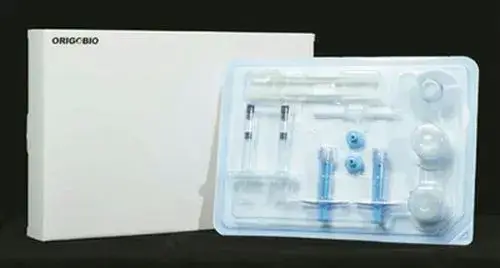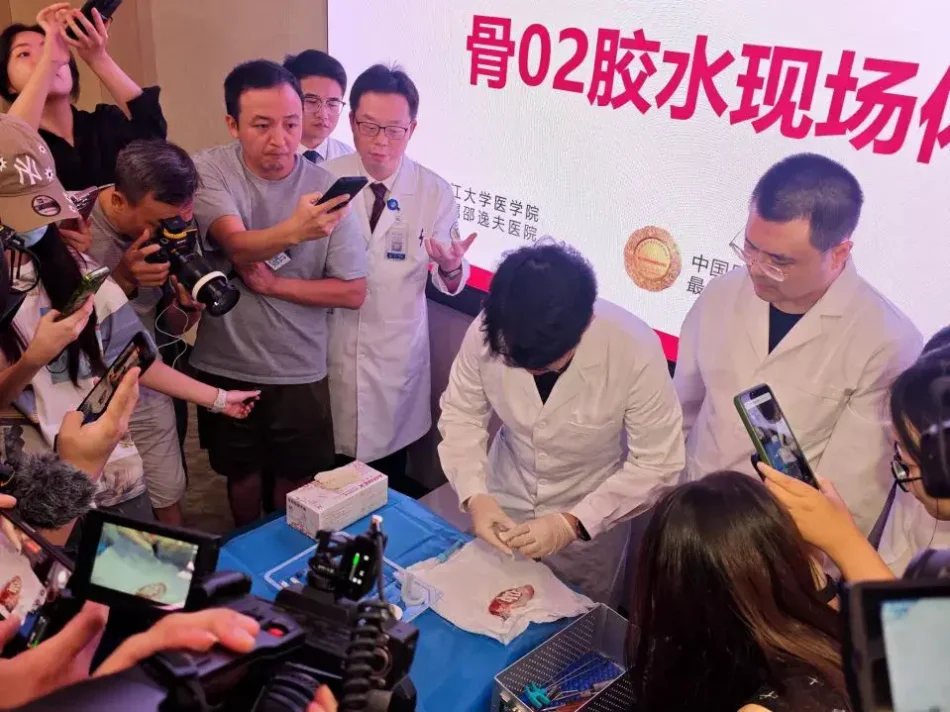Chinese scientists revealed a breakthrough bone glue technique they’ve developed that has been shown to heal fractures in just three minutes.
The groundbreaking bioadhesive, known as “Bone-02”, has been developed by a Chinese research team in Zhejiang Province at Shao Yifu Hospital (aka Sir Run Run Shaw Hospital), affiliated with the Medical School of Zhejiang University, in Hangzhou.
Led by Dr. Lin Xianfeng (Associate Chief Orthopedic Surgeon), this novel material was interestingly inspired by marine biology such as oysters, whose adhesive proteins function effectively underwater.
Surgeons deliver the adhesive through a minor incision using a syringe. Upon application, the glue disperses smoothly, filling voids between bone fragments and quickly solidifying to create strong, stable support. This method is especially effective for fractures in areas where conventional screws or plates are challenging to place, such as the delicate bones of the wrist, ankle, or spine.
Unlike metal implants, “Bone 02” can achieve precise fixation in just three minutes, even in surgical sites which might be blood-rich. The glue is naturally absorbed by the body as the bone heals, further eliminating risks associated with previous techniques using metal fixtures.
The glue has been tested in more than 150 patients so far, across several hospitals in Zhejiang Province. Laboratory and clinical trials demonstrated that it managed to achieve a maximum bonding force of over 400 lbs(180kg), a compressive strength of around 10 MPa and a shear strength of approximately 0.5 megapascal (MPa). Such a technique could completely replace the traditional steel plates and screws used in repairing many fractures, more importantly lowering the risk of infection involved in these practices due to rejection of foreign implants.

One trial case involved a wrist fracture healed a patient within three minutes. After a follow-up appointment to the trial, it was determined the fracture had fully healed without complications. Normally such a fracture would require a metal plate and screws to fix, with subsequent surgeries being required the following year to remove the plate and screws. The risk of infection would also be concerning due to the metal implants being rejected as foreign objects by the body.
At present, orthopaedic surgeons sometimes rely on bone cements and void fillers, yet none of these materials actually bond like an adhesive. Earlier attempts to develop bone glues in the 1940s, using substances like gelatine, epoxy resins, and acrylates, were eventually abandoned because of biocompatibility concerns.
Potential allergic reactions are of course one of the main concerns about this new material, and medical trials are notoriously long and rigorous because of the dangers involved in mistakes. Regulatory approval is still many years away but the news is still extremely promising after decades of researchers seeking a solution to fracture healing with minimal issues.
The potential impact this might have on the medical community is huge, as it can drastically improve patient outcomes, reduce hospital stays and lower the burden on the healthcare system.
Some of the comments left by online users were as follows:
“China is leaving US biotech in the dust.”
“US medical industry is built on greed. The US is the one who left it in the dust.”
“So China is beating us on material science as well. Cool.”
“Meanwhile, in America, we’ve decided vaccines are worse than the diseases they cure and that horse paste is a magical cure-all for any ailment. It’s so sad how far down the republican party has dragged us.”
According to a 2016 report by Zhejiang Online, while still a resident physician, Dr. Lin Xianfeng frequently observed that even the most experienced surgeons needed many hours in the operating room to fix shattered bone fragments, with the results being far from ideal. Such a challenge motivated him to seek alternatives, with oysters eventually providing the inspiration for the solution.








